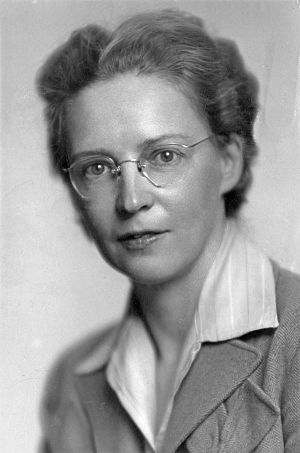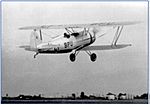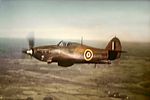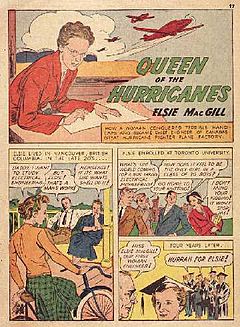Elsie MacGill facts for kids
Quick facts for kids
Elsie MacGill
|
|
|---|---|

Elsie MacGill during her CC&F years
|
|
| Born | 27 March 1905 Vancouver, British Columbia, Canada
|
| Died | November 4, 1980 (aged 75) Cambridge, Massachusetts, United States
|
| Education | Bachelor of Applied Science in Engineering, University of Toronto (1927); Master of Science in Engineering (aeronautics), University of Michigan (1929); Doctoral studies at MIT in Cambridge (1932–1934). |
| Occupation | Aeronautical engineer, Aircraft designer, Human rights activist, Author |
| Title | "The Queen of the Hurricanes" |
| Spouse(s) | E. J. (Bill) Soulsby |
| Children | Two stepchildren |
| Parent(s) | James Henry MacGill and Helen Gregory MacGill |
Elizabeth Muriel Gregory "Elsie" MacGill (March 27, 1905 – November 4, 1980) was an amazing Canadian engineer. She was the first woman in the world to earn a degree in aeronautical engineering, which is about designing and building aircraft. Elsie was also the first woman in Canada to get a bachelor's degree in electrical engineering. During World War II, she became known as the "Queen of the Hurricanes" for her important work building fighter planes in Canada. After the war, she became a leader in human rights, especially for women.
Early Life and Education
Elsie MacGill was born in Vancouver, Canada, on March 27, 1905. Her father, James Henry MacGill, was a lawyer. Her mother, Helen Gregory MacGill, was a journalist and the first woman judge in British Columbia. Elsie had two older step-brothers and an older sister, Helen.
The MacGill children were taught at home for their early years. They even had drawing lessons with famous artist Emily Carr and swimming lessons with Joe Fortes. Later, Elsie went to King George Secondary School. She started at the University of British Columbia when she was 16, studying applied sciences.
Elsie's mother believed strongly in women's suffrage, which was the right for women to vote. This influenced Elsie to study engineering. In 1927, she graduated from the University of Toronto with a degree in electrical engineering. She was the first Canadian woman to do so!
My presence in the University of Toronto's engineering classes in 1923 certainly turned a few heads.
Although I never learned to fly myself, I accompanied the pilots on all test flights – even the dangerous first flight – of any aircraft I worked on.
While studying, Elsie worked in machine shops during the summers. This helped her learn about repairing electrical motors. It was also where she first learned about aeronautical engineering. Just before she graduated, Elsie got polio, a serious illness. Doctors thought she might have to use a wheelchair for life. But Elsie was determined. She learned to walk again using two strong metal canes.
After graduation, Elsie worked for a company in Michigan that started making aircraft. This made her even more interested in planes. She began studying aeronautical engineering at the University of Michigan. In 1929, she became the first woman in North America, and possibly the world, to earn a master's degree in this field. She also studied at MIT to continue her learning.
Engineering Career and the "Queen of the Hurricanes"
In 1934, Elsie MacGill started working as an Assistant Aeronautical Engineer at Fairchild Aircraft. In 1938, she became the first woman to join the Engineering Institute of Canada. She gave talks and wrote articles about aircraft engineering.
Later, Elsie became the Chief Aeronautical Engineer at Canadian Car and Foundry (CanCar). This made her the first woman in the world to hold such a high engineering position. At CanCar, she designed a new training plane called the Maple Leaf Trainer II. Ten of these planes were sold to Mexico.
Elsie's biggest role came when her factory was chosen to build the Hawker Hurricane fighter planes for the Royal Air Force (RAF) during World War II. The factory grew very quickly, from about 500 workers to 4,500, with half of them being women. Elsie's main job was to make the production line run smoothly. She also designed special solutions to help the planes fly in winter, like de-icing controls and skis for landing on snow!
By 1943, CanCar had built over 1,400 Hurricanes. Elsie's success in this project made her famous. She even had a comic book story about her in 1942, where she was called "Queen of the Hurricanes." Many news stories were written about her, showing how interested people were in this amazing female engineer.
After the Hurricane production ended, Elsie and the factory manager, E. J. (Bill) Soulsby, left CanCar. Elsie and Bill married in 1943 and moved to Toronto. There, they started their own business as aeronautical consultants.
In 1946, Elsie became the first woman to be a Technical Advisor for the International Civil Aviation Organization (ICAO). She helped write rules for how commercial aircraft should be designed and built. In 1947, she became the first woman to lead a United Nations committee.
Champion for Women's Rights
In 1953, Elsie broke her leg. While she was recovering, she decided to write a book about her mother's life. The book, My Mother, the Judge, was published in 1955. Her mother and grandmother were active in the suffrage movement, which inspired Elsie to work for women's rights in the 1960s.
From 1962 to 1964, Elsie was the president of the Canadian Federation of Business and Professional Women's Clubs. In 1967, she was chosen to be part of the Royal Commission on the Status of Women in Canada. This group studied the challenges women faced in Canada. Elsie helped write the report, which came out in 1970. She also wrote her own separate statement when her opinions were different from the main report.
Elsie was also a member of the Ontario Status of Women Committee. For all her work, she received the Order of Canada in 1971.
Elsie MacGill once said:
"I have received many engineering awards, but I hope I will also be remembered as an advocate for the rights of women and children."
Later Life and Legacy
Elsie MacGill passed away on November 4, 1980, after a short illness. Shirley Allen, a member of a women aviators' group, said of her: "She had a brilliant mind and was recognized as an outstanding Canadian woman. Neither gender nor disability prevented her from using her talents to serve her community and country."
Awards and Honours

Elsie MacGill received many awards for her important work. In 1941, she won the Gzowski Medal from the Engineering Institute of Canada. In 1953, she was one of only 50 people, and the only woman, to have her picture in a special gallery honouring Canadian executives. That same year, the Society of Women Engineers in the U.S. gave her their Achievement Award for her contributions to aeronautical engineering. She was the first person outside the United States to receive this award.
The Canadian government gave Elsie the Canadian Centennial Medal in 1967. In 1971, she received the Order of Canada for her work as an engineering consultant and for her role on the Royal Commission on the Status of Women. In 1975, she was given the Amelia Earhart Medal. In 1979, the Ontario Association of Professional Engineers gave her their gold medal.
Posthumous Recognition
Elsie MacGill continues to be recognized for her achievements even after her death.
- In 1983, she was added to Canada's Aviation Hall of Fame.
- In 1992, she was one of the first people inducted into the Canadian Science and Engineering Hall of Fame in Ottawa.
- Her life story is featured in the 1999 documentary Rosies of the North.
- In 2016, she was one of five finalists considered to be featured on Canadian banknotes.
- In 2019, a new elementary school in Thunder Bay was named Ecole Elsie MacGill Public School.
- Also in 2019, Canada Post released a stamp honouring her as part of the "Canadians in Flight" series.
- In October 2020, she was the subject of a Heritage Minute short film, celebrating her achievements during World War II.
Archives
There is a collection of Elsie Gregory MacGill's papers at Library and Archives Canada.
See also
 In Spanish: Elsie MacGill para niños
In Spanish: Elsie MacGill para niños




